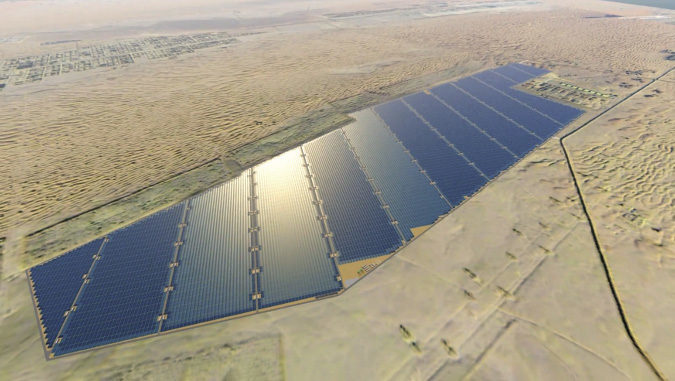The 1.18 GW Noor Abu Dhabi solar park has entered commercial operation on time and on budget.
The announcement, confirmed to pv magazine today by EWEC, the Emirates Water and Electricity Company referred to Noor Abu Dhabi as “the world’s largest single solar project”. The project is up and running and supplying power for AED0.08888/kWh ($0.024), a figure that marked the world’s cheapest solar power when the tender was awarded in 2017.
The winners were a consortium made up of newly-formed Emirati water and power investment fund the Abu Dhabi Power Corporation, Japanese industrial conglomerate Marubeni Corp and Chinese solar giant Jinko Solar Holdings.
According to the EWEC release, the AED3.2 billion ($871 million), 8km² project was built with more than 3.2 million solar panels, employed more than 2,900 workers at the height of construction at the Sweihan site and will provide power for 90,000 people.
EWEC chairman Mohammad Hassan Al Suwaidi said: “The completion of the project marks a significant milestone in the UAE’s energy strategy 2050, launched in 2017, to increase the contribution of clean energy in the total energy mix to 50% by 2050 while reducing the carbon footprint of power generation by 70%. This is in line with the sector’s transformation strategy by providing alternative sources of energy that can help us improve the sustainability of the water and electricity sector.”
This article was amended on 02/07/19 to remove the ‘Noor limits’ wordplay from the headline and to separate out a separate article about Dubai, which is an entirely separate emirate from Abu Dhabi. The article was further amended on 02/07/19 to add details from the EWEC announcement submitted to pv magazine. The article was further amended on 08/07/19 to state the Noor project capacity is 1.18 GW rather than the 1.78 GW originally stated.
This content is protected by copyright and may not be reused. If you want to cooperate with us and would like to reuse some of our content, please contact: editors@pv-magazine.com.




Well done,enjoy cheap and clean energy
Should this not be power for at least 900000 people (instead of 90000)?
I agree @ 2 kW/person, this results to 900,000 people